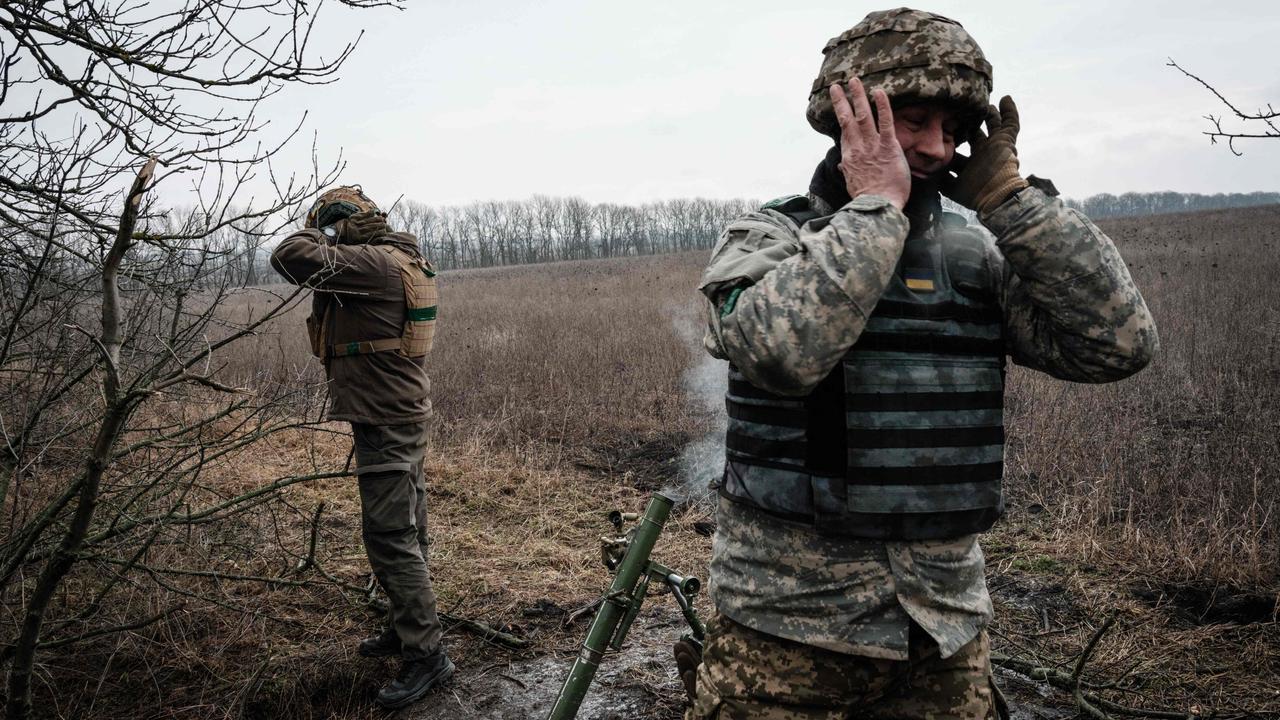With eye on Beijing, it’s urgent we step up support for Kyiv
Australia’s response to the war in Ukraine should be based on four big judgments. First, if Russia wins, the threat of war in Asia will be much more likely. Why? Because China sees Ukraine as a trial run, shaping Beijing’s own plans for military domination.
A victory for Vladimir Putin would tell Xi Jinping the world won’t step up to defend Taiwan, that the democracies are indeed rotten to the core and that mass war crimes count for nothing in pursuing regional dominance.
Second, Australia should support Kyiv as enthusiastically as we would want countries to help us, if and when China goes on the war path. Some might argue that such aggression is now less likely, given our happily stabilised relations with Beijing.
Hardly. No number of platitudes from the Department of Foreign Affairs and Trade can hide the reality that China is arming for war. Xi may ultimately choose the pathway to peace, but only if the Indo-Pacific’s consequential democracies show they have the gumption to defend themselves.
Third, given the scale of fighting in Ukraine, what looked like generous military aid from Canberra six months or even three months ago is now, sadly, not enough to make a material difference.
Tokenism doesn’t beat totalitarianism. We must do more to sustain Ukraine’s momentum towards defeating Russia.
The fourth big judgment is really a question: What role does Anthony Albanese want Australia to play on the world stage? Albanese’s early overseas trips – Japan for the Quad; Madrid for the NATO summit; Kyiv to meet Volodymyr Zelensky with offers of Bushmaster vehicles; even leadership talks in Jakarta and Port Moresby – these all presented the credentials of a country wanting to play a leading security role.
Even for a biggish middle power, leadership on security comes at a price. We will see the government’s genuine appetite for that leadership in March when the eye-watering bill for nuclear-powered submarines is delivered along with the Smith-Houston Defence Strategic Review.
My fear is that Canberra will go weak at the knees when it is realised the current defence budget, just under 2 per cent of gross domestic product, is about half what is really needed to develop AUKUS and Quad opportunities.
Defence is not geared to take on nuclear-powered submarines, hypersonic missiles, quantum computing, autonomous vehicles, indigenous missile production and the range of undersea technology anticipated in these new agreements. To be blunt, we aren’t even in the ballpark beyond promises of small-scale trials and tests.
For close to a generation the ADF has been structured around providing packets of military force for Middle East operations and, in the case of East Timor, a larger grouping for a (thankfully) peaceful stabilisation operation.
Our current strategic environment changes everything. Now we have to think about securing our bases from missile attack, the risk of losing aircraft and ships in combat, stockpiling and local production of ammunition beyond tokenistic levels.
Ukraine presents an even more immediate test for Albanese. The northern spring is a few months away. There is speculation Russia will stage a large military ground offensive. Whether or not Moscow can do that, the desperate need is to give Kyiv the means to consolidate its position on the ground.
Putin might win by sustaining a grinding conflict – Russia is bigger than Ukraine and hopes a drawn-out war will weaken Western support and force a negotiation where Kyiv has to cede invaded territory.
Ukraine will win if it can change facts on the ground by liberating Russian-occupied land.
To achieve that objective Kyiv needs three things: artillery and armour to move quickly on the battlefield, airpower and air defence to control its own skies and, finally, a means to deter Russia from further aggression once the ground war is over.
On tanks, there was a breakthrough in January when Washington DC and Berlin agreed, reluctantly it seems, to provide small numbers of American Abrams and German Leopard 2 tanks.
Let’s dispense with one myth right away: There is nothing so complex about either tank that the Ukrainians won’t be able to make good use of them.
In the space of a year Ukraine has brought into mass production its own 155-millimetre self-propelled howitzer, the Bohdana. Kyiv is gearing to domestically produce the Turkish Bayraktar TB2 drone, which will play a critical role in target selection and helped to sink the Moskva.
(An important footnote: it’s claimed the Abrams will be a logistic problem for Ukraine because the tank’s turbine engine uses jet fuel. In fact, the vehicle can easily be converted to use diesel or unleaded petrol, as do the Australian Abrams tanks.)
Ukraine was once the engine room of a large part of Soviet military, space and aerospace technology. Over the past year Kyiv has (with Western help) developed an astonishingly good real-time intelligence-gathering and targeting system.
Ukraine will master the new tanks quickly and excel in their use. They could be decisive in helping Ukraine take back control of Russian-occupied territory in the Donbas and Crimea.
What Kyiv needs is many hundreds of tanks – not the current offers, which total around 100 – and, just as important, urgently delivered training.
Australia should make available right now the full resources of the ADF’s Puckapunyal training area to the Ukrainian military. This would include the army’s headquarters of the Combined Arms Training Centre, School of Armour, School of Artillery, School of Transport, Army Knowledge Centre and Joint Logistics Unit, all based in Victoria. There could be no better demonstration of the value of the ADF’s armoured capability than to host and train the Ukrainian military at these facilities.
Defence might argue that this will interrupt the ADF’s training schedule. War does that to a peacetime army. Only the government has the authority to take such a big step, but the strategic circumstances demand it.
This would also be the right moment to offer Ukraine, say, 200 Bushmaster vehicles, on top of the 90 or so already promised. Canberra has habituated itself to do defence things cautiously and incrementally – a shame when strategy demands speed. The test for Australia is to work with Ukraine swiftly and at scale – to do enough to make a battlefield difference.
At the recent Australia-France ministerial consultations it was announced the two countries would collaborate in producing 155-millimetre ammunition for Ukraine. That is welcome but note that French Defence Minister Sebastien Lecornu said “several thousand 155mm shells are going to be produced jointly”.
In terms of volume that represents a slow afternoon in the Donbas.
On air capability, the current state of play is that the Biden administration is reluctant to export F-16 multi-role combat aircraft to Ukraine. This follows Washington’s bizarre determination to provide military assistance late, then slowly, then in inadequate numbers.
My guess is that, just like the tanks, Joe Biden will relent on aircraft too in coming months, allowing their export. The choice for the democracies is to sustain a bloody stalemate or to give Kyiv the means to press for a decisive military advantage. That might then make a negotiated settlement possible.
Anything Australia can do to give Kyiv the means to break the combat stalemate is vital. This must happen now, not in several months’ time.


No comments:
Post a Comment